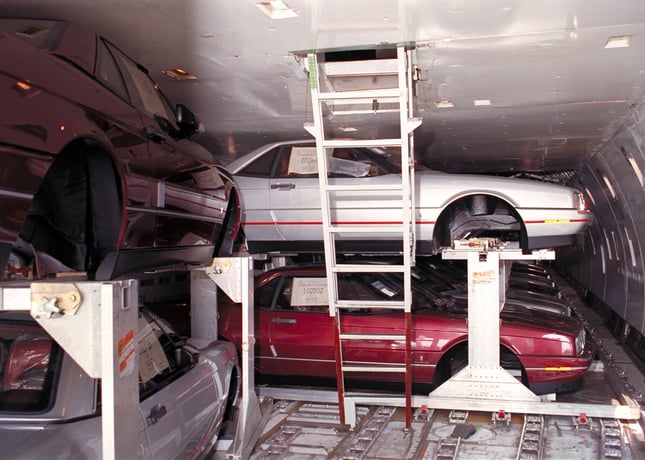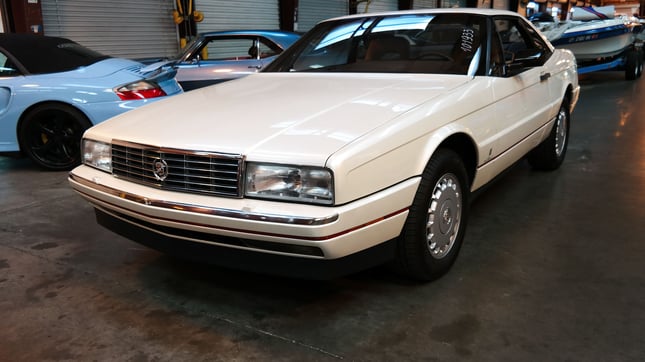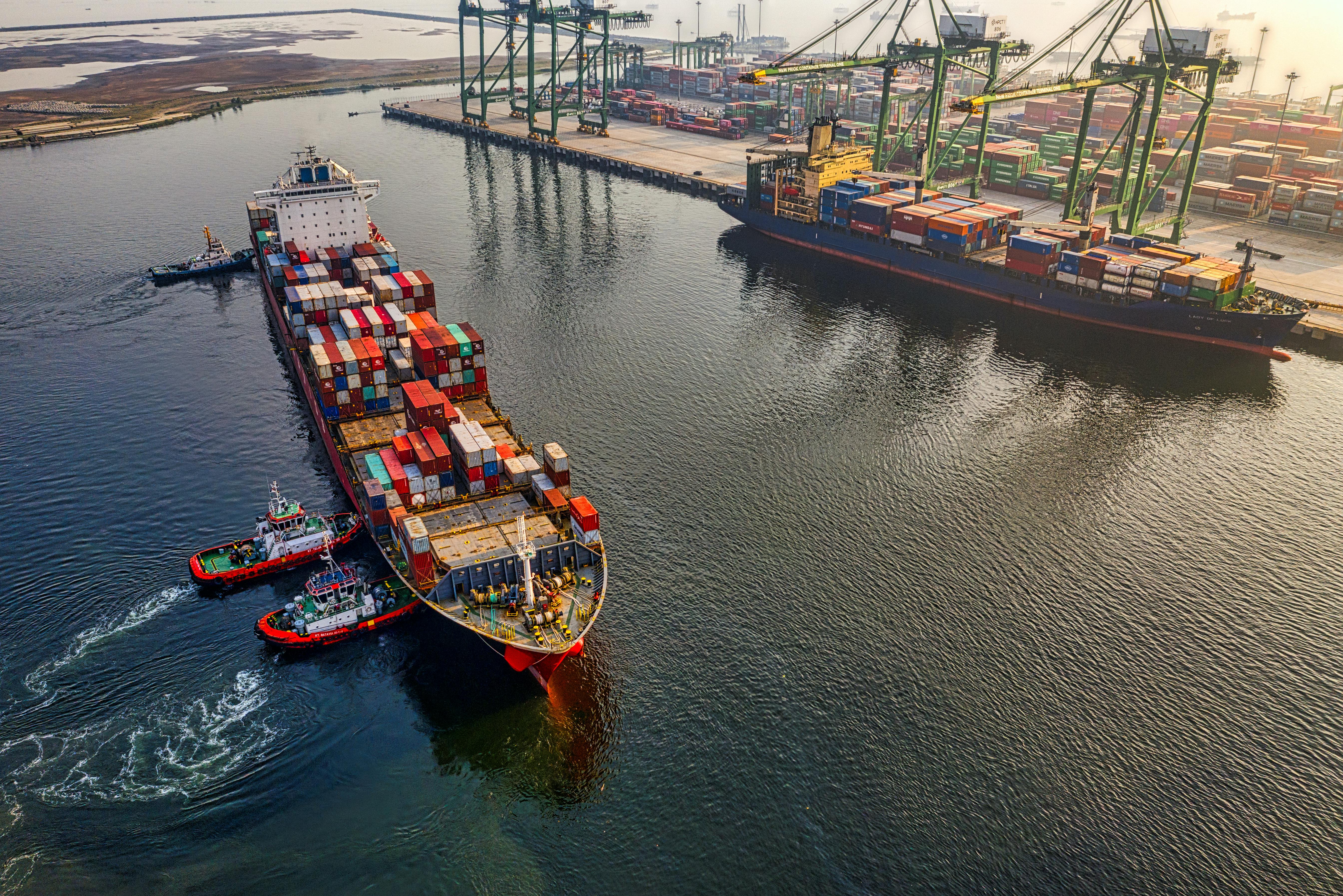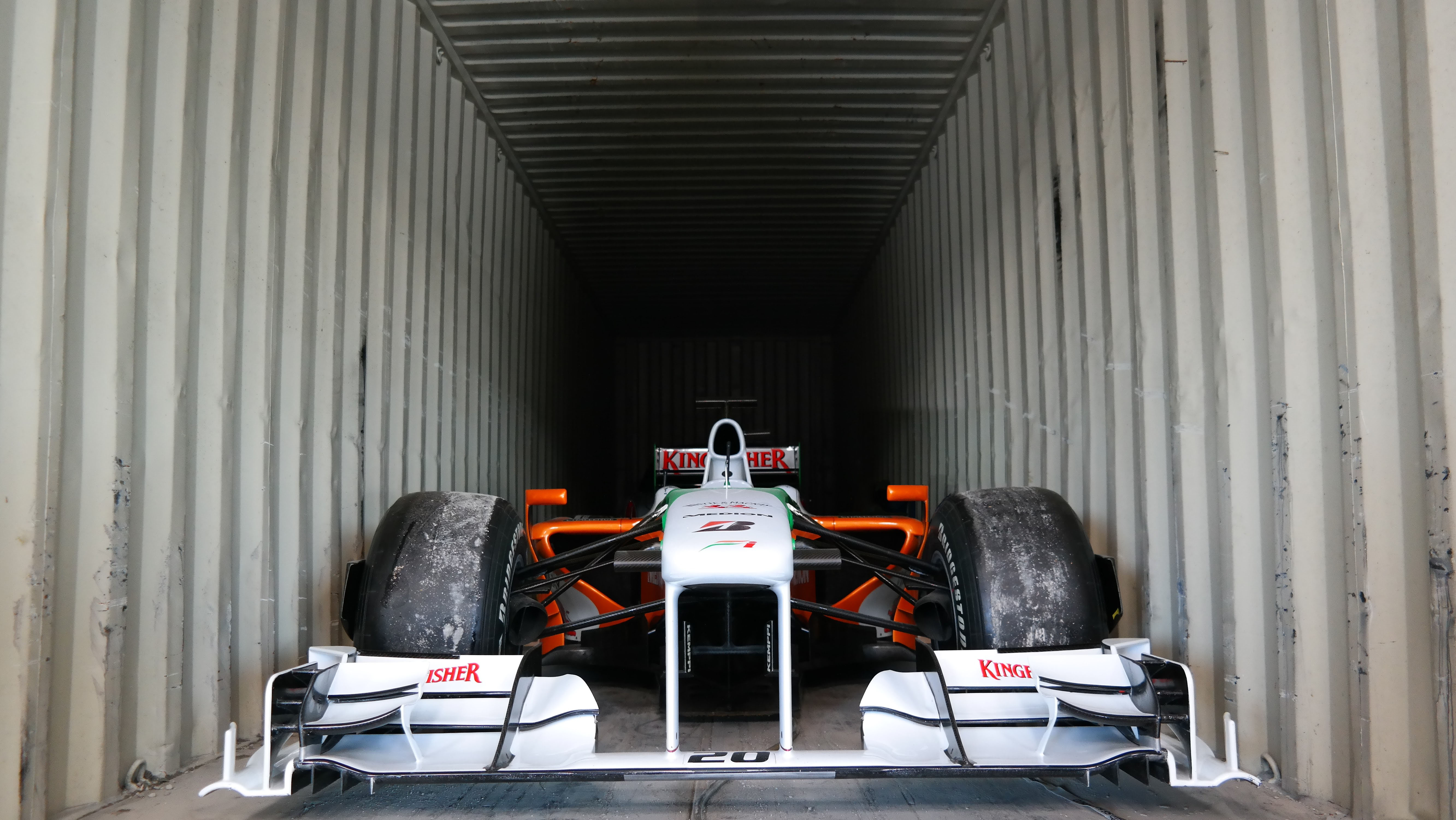Thousands of Cadillacs on First-Class Flights from Italy
In 1986, Cadillac set out to build a luxury roadster to compete with the Mercedes SL and Jaguar XJS. Cadillac was satisfied with using an American built chassis and engine, but they wanted a design to set them apart from the competition. Who better to turn to than Pininfarina, a legendary coachbuilder in Italy. Cadillac hired Pininfarina to design and manufacture 21,430 bodies during the Allante's 7-year production run. Now all they needed was to figure out the logistical challenge of shipping thousands of cars 4,600 miles to the United States.

Shipping the Cadillacs in a container by sea was an option. Fit 4 cars in a 40ft container, and wait 24 days for them to arrive. It would take 5,357 containers in total, and a ship with twice the capacity of the largest container ships available at the time.
But Cadillac was accustomed to mass-producing cars as quickly and efficiently as possible. They ultimately chose to ship their cars from Italy using air cargo, cutting transit time down to just 12-hours. Cars were placed in crates of two and loaded in Boeing 747s. With each plane holding 56 cars, over 383 chartered flights from Italy were taken during the 7-year production run. It became to be known as "The world's longest assembly line".
As you can imagine, shipping cars by air proved to be a costly endeavor. Which is why nearly all of the major manufacturers today depend on containers and roro ships to move their cars around the world.

This 1987 Allante was shipped from California to Australia in a container.
Shipping cars by airplane instead of in containers offers several benefits, although it is worth noting that air transportation is generally more expensive than ocean transportation. Here are some of the advantages of shipping cars by airplane:
-
Speed: Air transport is significantly faster than ocean transport. While shipping cars by sea can take weeks or even months, shipping them by air can be accomplished within a matter of days. This is especially advantageous for urgent deliveries or when time is a critical factor.
-
Reduced handling: Shipping cars by air involves fewer handling processes compared to shipping by sea. The cars are typically loaded onto cargo planes directly, minimizing the risks associated with multiple transfers and potential damage during handling.
-
Global reach: Air transport offers global coverage, allowing cars to be shipped to remote or hard-to-reach locations more easily. This is particularly beneficial for locations without direct access to seaports or regions with inadequate infrastructure for sea freight.
-
Enhanced security: Air cargo is subject to stringent security measures, including advanced screening processes and strict monitoring. This can provide peace of mind for car owners, knowing that their vehicles are being transported with high levels of security.
-
Weather independence: Air transport is less affected by adverse weather conditions compared to sea transport. Delays due to storms, rough seas, or other weather-related issues are significantly reduced when shipping cars by air.
-
High-value or luxury vehicles: Shipping high-value or luxury vehicles by air can be a preferred option due to the added security, reduced handling, and faster delivery times. It ensures that valuable automobiles are transported quickly and safely.
-
Specialized handling: Air transport often provides specialized handling services for vehicles, including secure loading and unloading procedures, specialized equipment, and trained personnel. This can be particularly beneficial for delicate, exotic, or vintage cars that require extra care during transportation.
It's important to consider that while air transport offers these advantages, it is generally more expensive than sea transport. The cost of shipping cars by air can be prohibitive for regular or mass shipments, making it a more suitable option for specific circumstances where speed and efficiency outweigh the higher costs.
You May Also Like
These Related Stories

How to Ship a Car to Germany from USA | Complete 2025 Guide

Ford Mustang vs. Chevrolet Camaro: History of the Pony Car Rivalry

-093789-edited.png?width=220&height=79&name=wcs_final_logo_(1)-093789-edited.png)